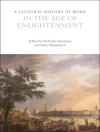Burning the Dead traces the evolution of cremation in India and the South Asian diaspora across the nineteenth and twentieth centuries. Through interconnected histories of movement, space, identity, and affect, it examines how the so-called traditional practice of Hindu cremation on an open-air funeral pyre was culturally transformed and materially refashioned under British rule, following intense Western hostility, colonial sanitary acceptance, and Indian adaptation. David Arnold examines the critical reception of Hindu cremation abroad, particularly in Britain, where India formed a primary reference point for the cremation debates of the late nineteenth century, and explores the struggle for official recognition of cremation among Hindu and Sikh communities around the globe. Above all, Arnold foregrounds the growing public presence and assertive political use made of Hindu cremation, its increasing social inclusivity, and its close identification with Hindu reform movements and modern Indian nationhood.
Mục lục
List of Figures and Tables
Preface
Acknowledgments
Part One. The Spectacle of Fire
1. Burning Issues
2. Colonial Necro-Politics and the Polysemic Corpse
Part Two. Questing Fire
3. The City and Its Dead
4. Consuming Fire
5. The Global Dead
Part Three. The Fire Triumphant
6. The Rebirth of Cremation
7. Cremation and the Nation
Epilogue: Rethinking the Hindu Pyre
A Note on Weights and Currency
List of Abbreviations
Glossary
Notes
Bibliography
Index
Giới thiệu về tác giả
David Arnold is Professor Emeritus of Asian and Global History at the University of Warwick. He is the author of Colonizing the Body: State Medicine and Epidemic Disease in Nineteenth-Century India and Everyday Technology: Machines and the Making of India’s Modernity.












